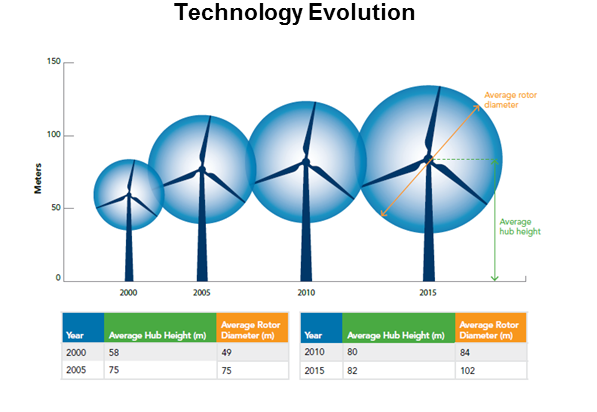Wind Energy Official Extols Virtues of Wind Energy

Can wind power be a complement to the variability of solar power for a state like California that seeks a cleaner energy future and grid reliability?
Tom Kiernan, CEO of the American Wind Energy Association, thinks so.
In a May 31 talk at the California Energy Commission, Kiernan gave his assessment about how wind power can benefit the state’s renewable energy goals, one of which is to generate half of its electricity from renewable sources by 2030.
"You cannot do much with solar without exacerbating the duck curve," said Kiernan.
In referencing the duck curve, Kiernan was referring to a well-known graphic in the energy industry whose curved shape resembles a duck and whose path reveals the effect that solar and wind energy have on daily demand on utility electricity and the grid.
As more solar energy comes online it is expected to create an oversupply of solar during daytime hours, when electricity demand is low.
Demand begins to rise after people get home for work and turn on air conditioners, lights and appliances. This coincides with a decline in solar. The increased demand and plunge in solar creates a problem for the grid as it relies on a consistent supply of energy to avoid blackouts and energy cascades.
Bringing wind into the mix can mollify the daily and seasonal variability of solar energy, Kiernan said.
In Colorado, the sun shines the least during winter and spring but it is also the windiest time of year.
Wind also can be a variable energy source since it does not blow consistently. But it is rare for a wind farm to totally shut down because there is usually wind blowing in at least one portion of the site.
Kiernan said the evolution of wind technology will make wind become more attractive as an energy source. Wind turbines are getting larger and taller, and are producing more power per turbine.
In 2000, the average rotor width of a turbine was 49 meters. In 2015, that size had increased to 102 meters. The turbine height also increased from 58 meters in 2000 to 82 meters in 2015. Taller turbines allow wind energy to be accessed in areas previously not considered as conducive to wind energy, especially in Midwest states, Kiernan said.
California ranks fourth in the United States in installed wind power capacity after Oklahoma recently surpassed it for the third spot. Texas leads the nation with 21,044 megawatts (MW) installed with Iowa second, according to the American Wind Energy Association.
California has 5,656 MW of wind capacity installed. In 2015, wind provided about 6 percent of in-state electricity generation, double the in-state amount produced in 2000.
Listen in to Tom Kiernan's talk below.



